My No-Nonsense Guide to DIY Cleaners That Actually Work
Look, I’ve spent a huge chunk of my life in the professional home care and restoration business. I’ve seen it all, and I’ve used it all—from heavy-duty commercial solvents that could probably strip a car to just plain old soap and water on my hands and knees. For a long time, I just grabbed whatever was strongest. It worked, sure, but the chemical haze would hang in the air for days, and my hands were a wreck, even with gloves. I just knew there had to be a better way to get that deep, satisfying clean without the nasty side effects.
In this article
So, I went down a rabbit hole, but not the trendy blog kind. I dove into the basic chemistry of what makes things clean. I started messing around with the simple stuff you see in every pantry: vinegar, baking soda, and basic soaps. And what I figured out completely changed how I work. For the vast majority of cleaning jobs, a few simple, well-made formulas don’t just work—they often work better than the store-bought stuff. Plus, they’re way safer for your family, your pets, and the actual surfaces you’re trying to protect.
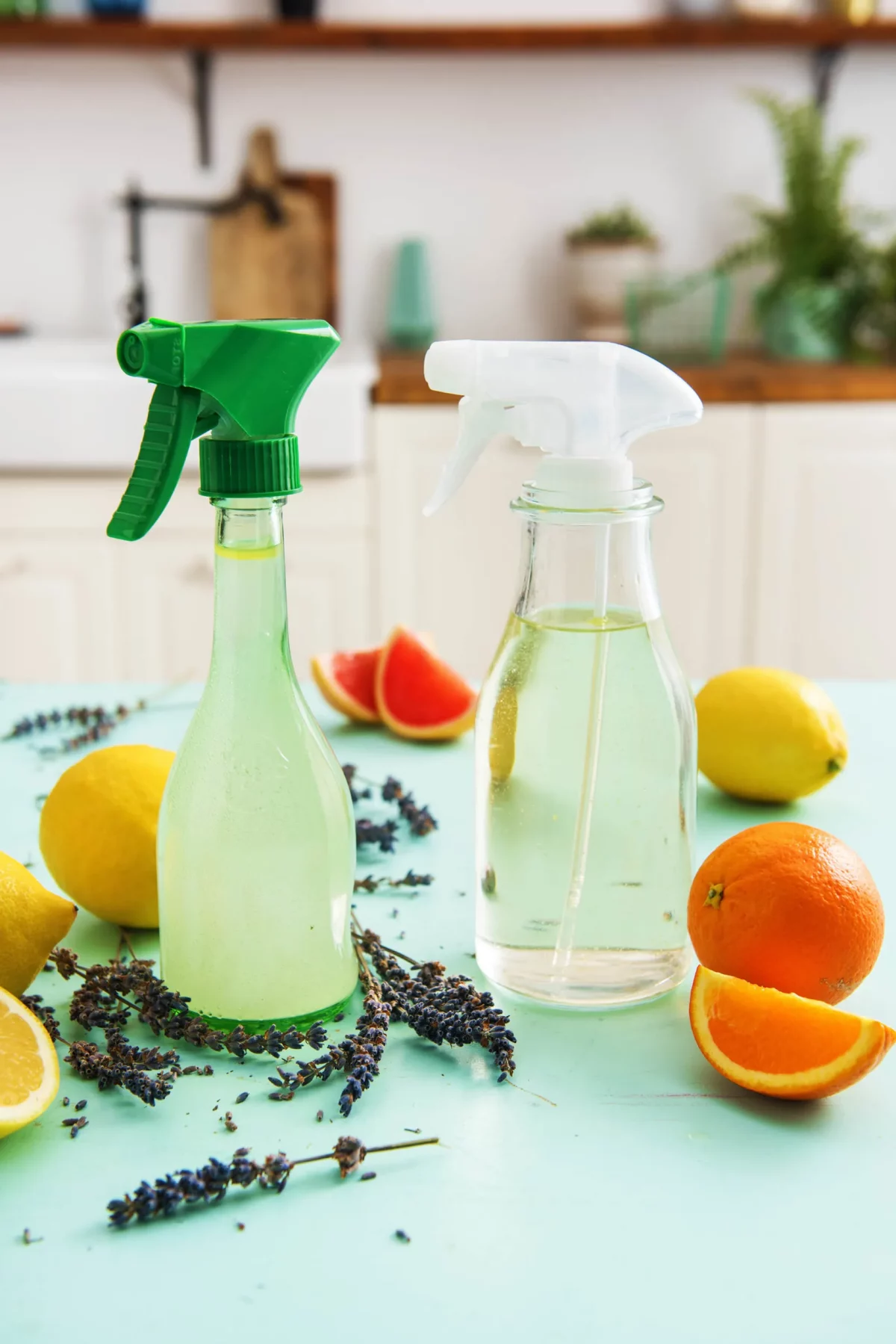
This isn’t just a list of recipes. I want to pass on what I’ve learned from years of hands-on, real-world trial and error. We’ll get into the ‘why’ behind the ingredients, the right way to use them, and the safety rules you absolutely can’t ignore. My goal is to give you the confidence to mix and use your own cleaners like a pro.
First Things First: Understanding Your Cleaning Crew
Honestly, the biggest mistake people make is playing kitchen chemist, mixing things without a clue how they work. That’s how you end up with a fizzy, useless mess. Knowing the role of each ingredient is everything. When I train new people, this is day one, lesson one.
Think of it as a balancing act. On one side, you have your acids, and on the other, your bases (or alkalis). They work in opposite ways.
The Acid: Distilled White Vinegar
Vinegar is your go-to acid. That big jug of distilled white vinegar you can get at any grocery store for about $3-$4 is your best friend. It’s a mild acid, which makes it an absolute champ at dissolving mineral deposits. You know that chalky white film on your faucets or inside your tea kettle? That’s what vinegar is for. The acid breaks down those alkaline minerals, letting you just wipe them away.
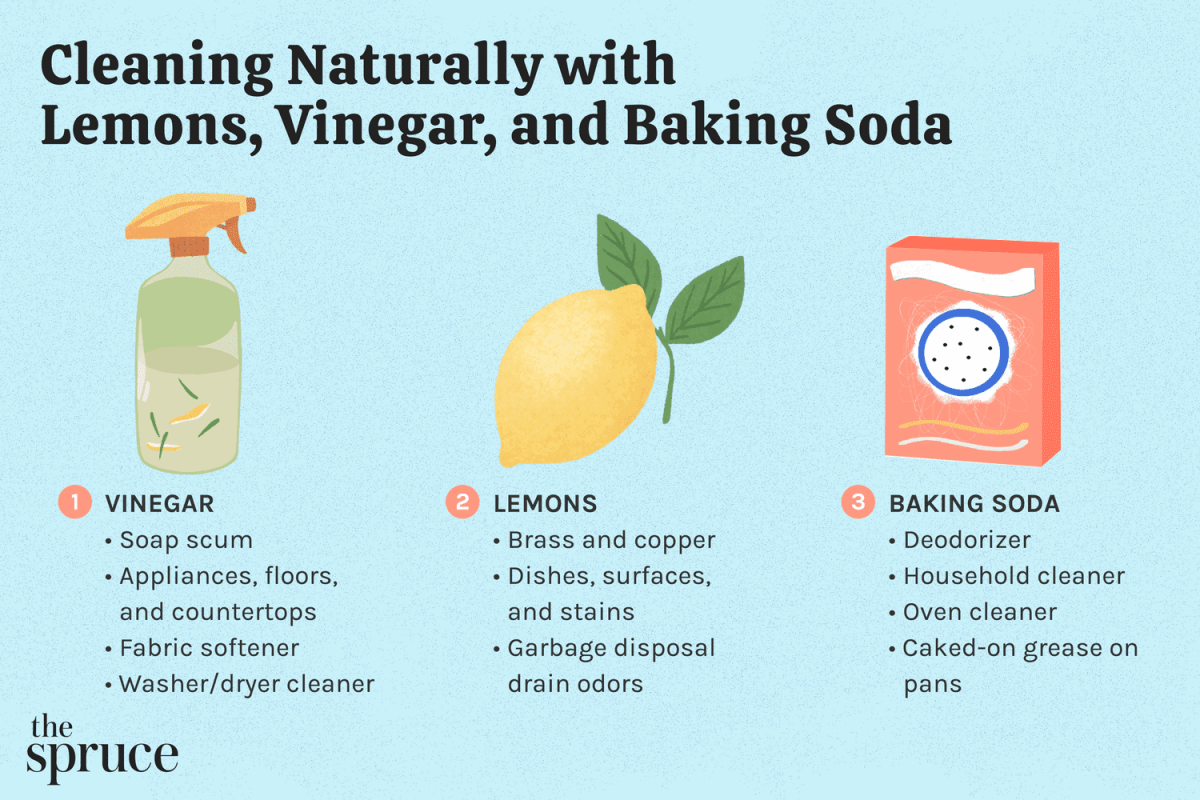
Because it’s an acid, it also neutralizes alkaline things like soap scum. It has some mild antibacterial qualities too, but let’s be real—it’s not a hospital-grade disinfectant. It’s for everyday grime.
Heads up! A critical warning: Acids react with certain stones. NEVER use vinegar on marble, granite, or travertine. I mean it. It will etch the surface, creating dull spots that are a nightmare (and a fortune) to fix professionally. Also, keep it away from unsealed grout, as it can slowly eat it away, and don’t use it on cast iron unless you want a rust problem.
The Base (Alkali): Baking Soda
On the other side of the scale, you have baking soda. This is your gentle base and your soft-scrubbing abrasive. Its power is in neutralizing acidic odors (think stinky fridge) and breaking down grease and proteins. You can grab a box for a little over a dollar at any supermarket.

As a fine powder, it gives you just enough grit to scrub sinks, pots, and pans without scratching them. Just make a paste with a bit of water. The alkaline nature helps turn grease into a more soap-like substance that you can easily wash away. Easy.
By the way, about that fizzing trick… when you mix vinegar and baking soda, you get that cool volcano effect. While that initial reaction can help physically loosen a clog in a drain, you’re basically just neutralizing both ingredients and creating saltwater. For surface cleaning, you’ve just cancelled out the power of both. It’s much smarter to use them one after the other. Clean with a vinegar spray first, rinse, and then use a baking soda paste if you need to scrub.
The Stronger Base: Washing Soda
Okay, now for the heavy hitter. Washing soda is like baking soda’s tougher older cousin. It’s much more alkaline and is a serious grease-cutter. This is what I pull out for the really nasty jobs, like a greasy oven hood or stubborn laundry stains. You’ll find it in the laundry aisle, usually for around $5 a box, and that box will last you ages.
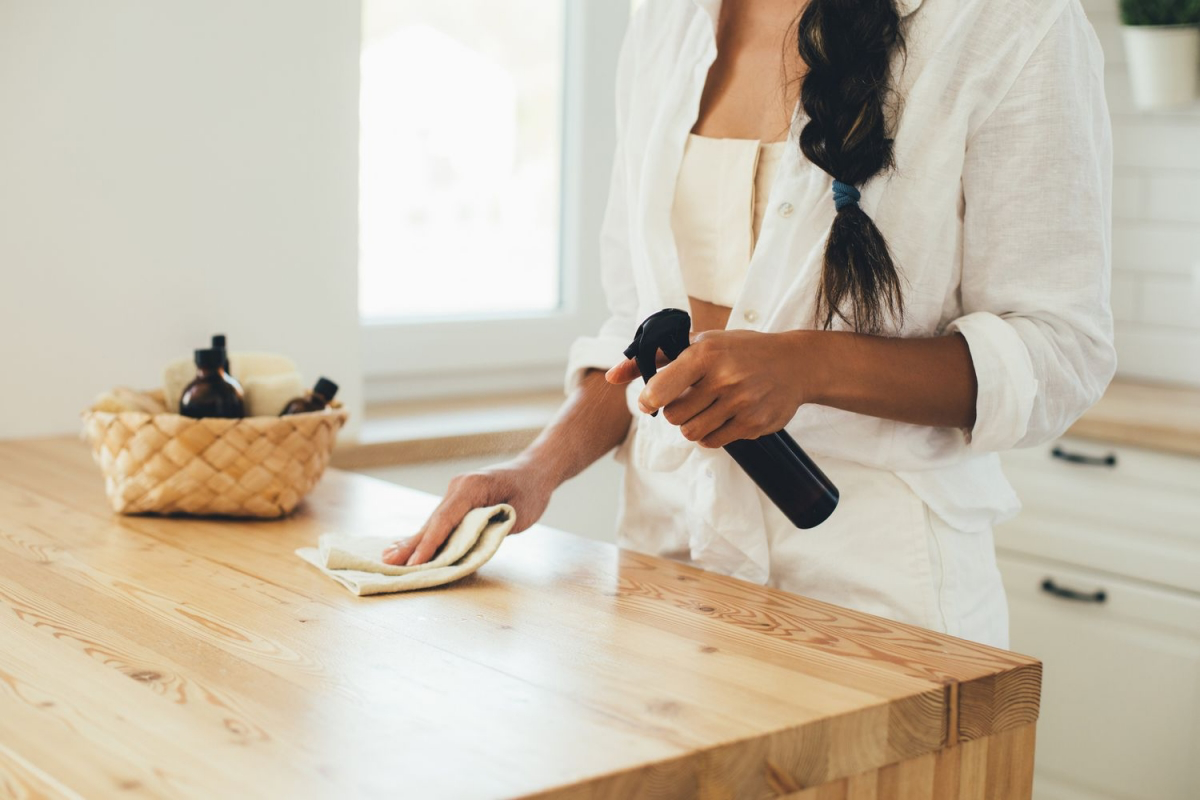
Quick tip on safety: This stuff is caustic. It can seriously irritate your skin and eyes. So, what does ‘caustic’ actually mean? It literally starts to turn the natural oils on your skin into soap, which is why it feels slippery and is so damaging. Wear gloves, always. And keep it away from aluminum, as it will react with the metal. Also, no-go on fiberglass or waxed floors.
The Oxidizer: Hydrogen Peroxide (3% Solution)
That classic brown bottle of 3% hydrogen peroxide in your first-aid kit (usually about $1-2) is a fantastic cleaner. It’s an oxygen-based bleach, which just means it breaks down into water and oxygen. It’s so much gentler on fabrics and surfaces than chlorine bleach.
Peroxide works by oxidizing, which is a powerful way to destroy mold, mildew, and bacteria. It’s my secret weapon for whitening dingy tile grout and disinfecting cutting boards. Light is its enemy, though, which is why it comes in a dark bottle. Keep it that way! A pro move is to just screw a spray nozzle directly onto the original bottle.
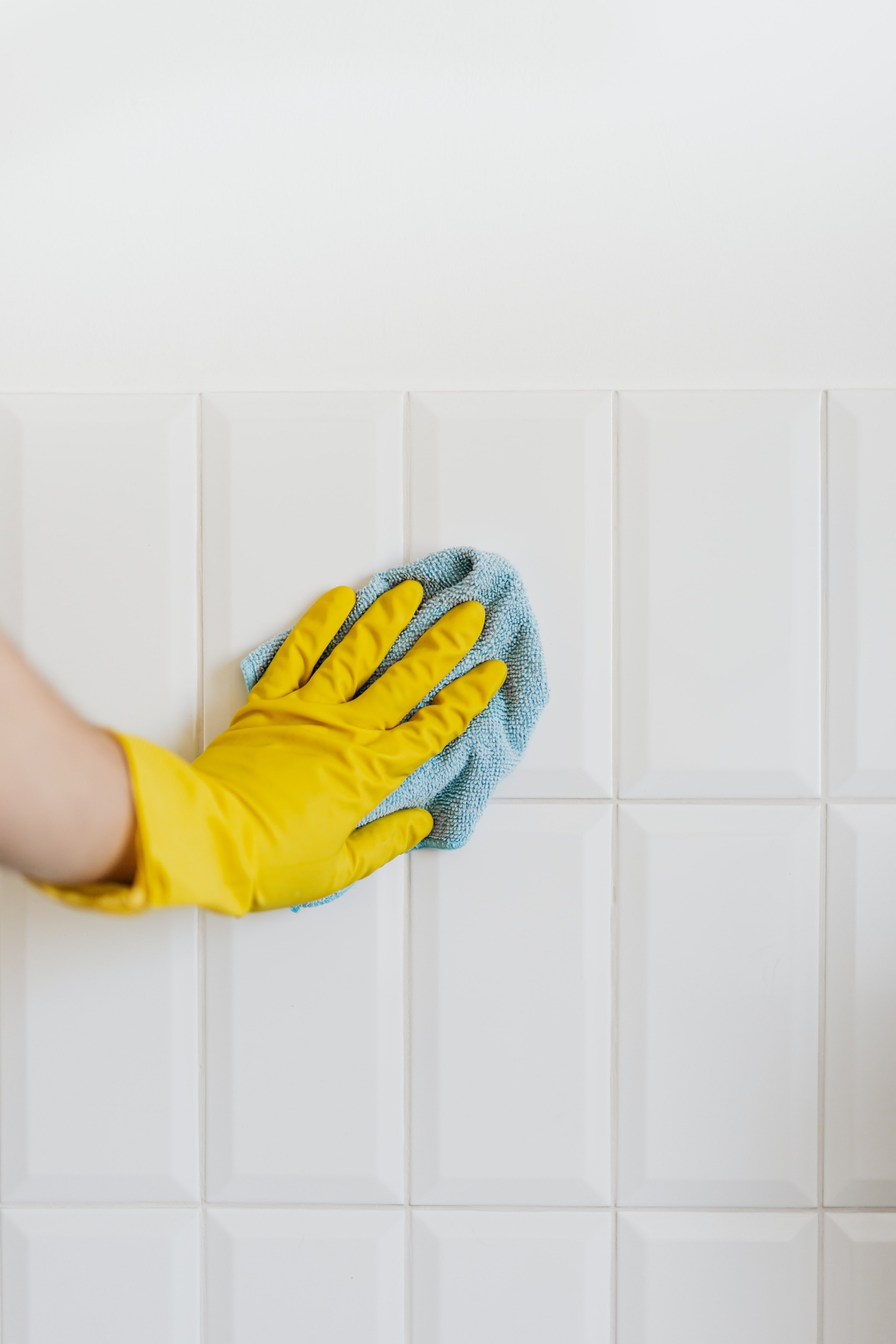
A non-negotiable safety rule: Do NOT mix hydrogen peroxide and vinegar together in the same bottle. It creates something called peracetic acid, which is highly corrosive and can seriously harm your eyes and lungs. You can use them one after the other on a surface (spray one, wipe, then spray the other), but never, ever pre-mix them.
The Lifters: Soaps and Detergents
People get confused here, but it’s simple. Both soaps and detergents are ‘surfactants’—they make water ‘wetter’ by breaking its surface tension, allowing it to sneak under dirt and lift it away.
- Castile Soap: This is a true, natural soap made from vegetable oils. It’s gentle and biodegradable. The only catch? It can react with hard water and sometimes leave a bit of a film behind. A big bottle of a brand like Dr. Bronner’s might seem pricey at around $15, but it’s highly concentrated and will last for a very long time.
- Sal Suds: This is a biodegradable detergent, not a soap. It’s a powerhouse on grease and, more importantly, it works perfectly in hard water without leaving any residue. For mopping floors or really greasy kitchen messes, I’ll often reach for a detergent like this.
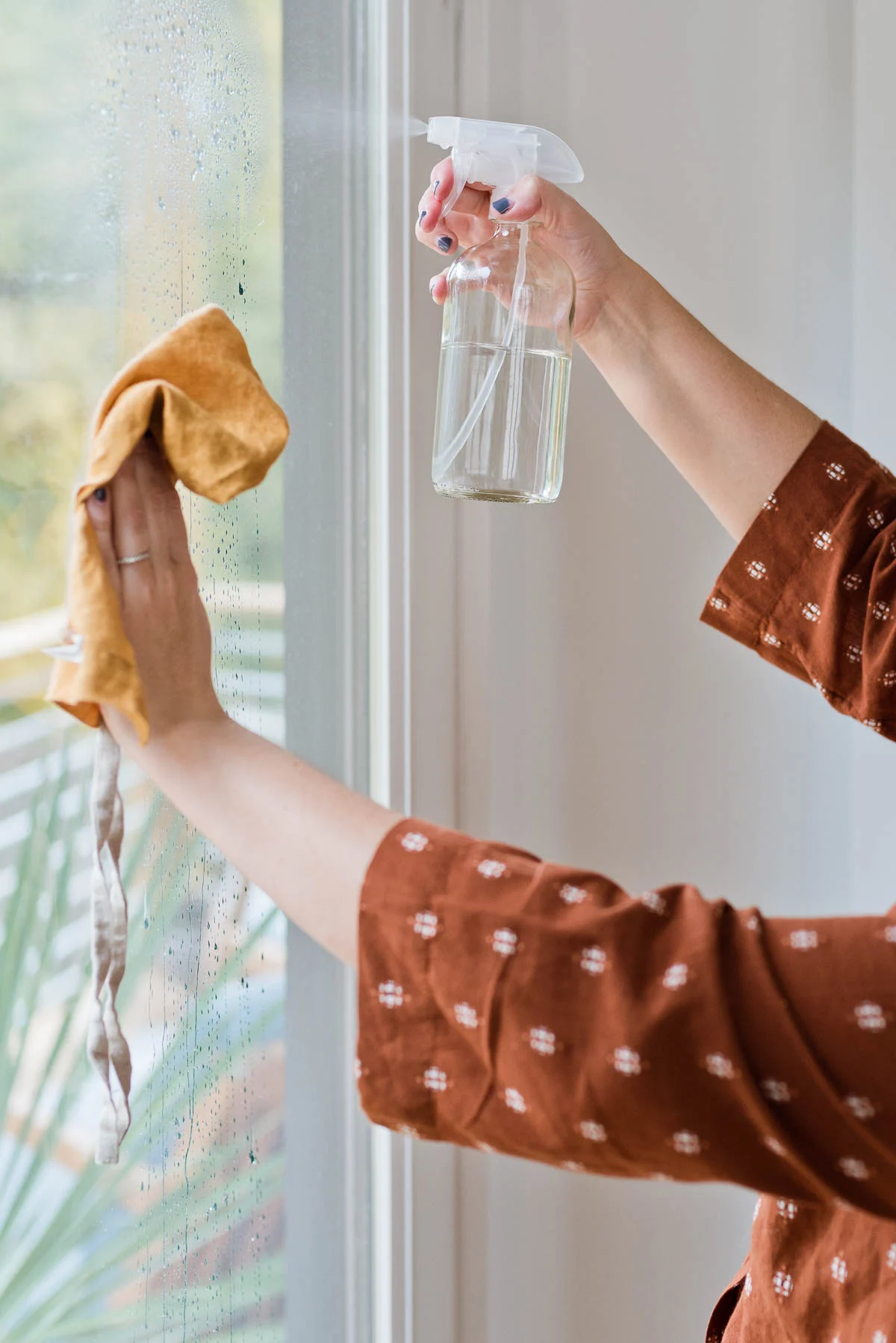
The Pro’s Toolkit and How to Use It
The best ingredients on earth are useless without the right tools and techniques. This is where you separate the amateurs from the pros.
Your Must-Have Tools
- Quality Spray Bottles: Please, don’t use those flimsy dollar-store bottles. They clog, leak, and will just make you angry. Invest in a couple of chemical-resistant HDPE bottles. You can find a good two-pack at a hardware store like Home Depot or online for about $10-$15. And for the love of all that is holy, label every single bottle with a permanent marker. Write the contents and the date you mixed it.
- Microfiber Cloths: These are the real deal. The tiny fibers are designed to grab and hold onto dust and grime. Get a multi-pack for about $15-$20 and color-code them to prevent cross-contamination. This is standard practice in the industry: blue for glass, green for general surfaces, yellow for the kitchen, and red for the bathroom. It’s a simple system that prevents you from wiping your kitchen counter with a toilet rag. Yikes.
- Scrubbers: You need a little muscle sometimes. A set of brushes with different bristle stiffness and some non-scratch scouring pads are essential for everything from grout to pots and pans.
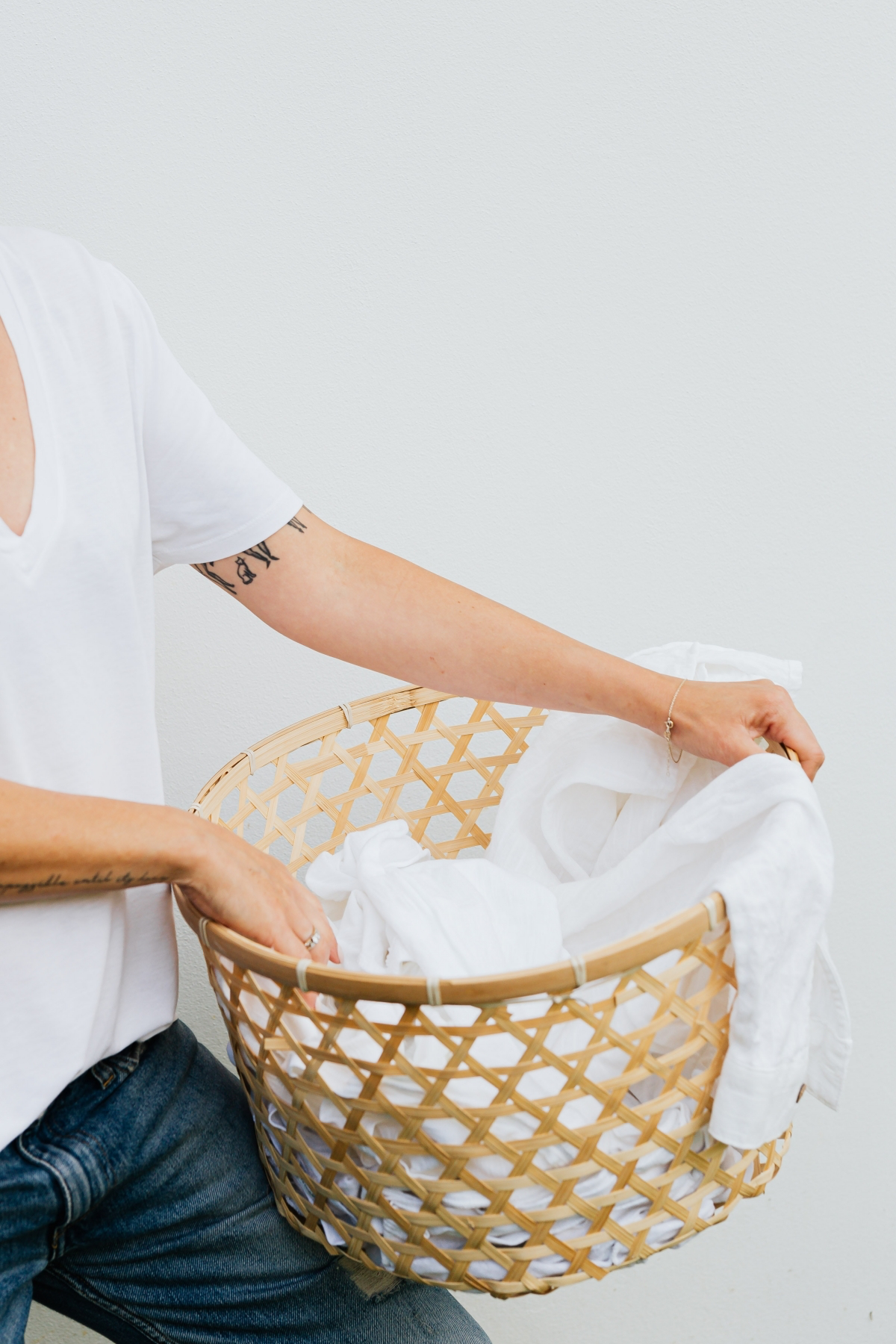
Core Techniques to Master
- Top to Bottom: Always work from the top down. Dust the high shelves before you vacuum the floor. Clean the counters before you do the cabinet fronts. Let gravity be your helper.
- Let It Dwell: This is huge. Natural cleaners need a little time to work their magic. Spray a surface and walk away for 5-10 minutes. This ‘dwell time’ does the heavy lifting for you, so you can just wipe away grime instead of scrubbing it with all your might.
- The Two-Step Wipe: For a perfect, streak-free finish, especially in the kitchen, use one damp cloth with your cleaner to wash, then follow up with a separate, dry microfiber cloth to buff the surface. Game-changer.
- Always Test First: Before you go wild with a new cleaner, test it on a small, hidden spot—like behind the fridge or under a cushion. Apply, wait, wipe, and check for any damage. I still do this, even with formulas I’ve used a thousand times on a surface I don’t recognize.

My Go-To Recipes: Your Practical Workshop
Alright, let’s get mixing. These are the workhorse recipes I use constantly. Pay close attention to what NOT to use them on—that’s just as important as the recipe itself.
1. The Everyday All-Purpose Spray
This is my go-to for daily spills, countertops (not stone!), shelves, and general wipe-downs.
- Result: Cuts through daily grime and fingerprints, leaving a fresh, clean surface without sticky residue.
- Best For: Laminate counters, sealed wood, painted walls and shelves.
- Do Not Use On: Marble, granite, or any natural stone.
- Ingredients: 1 part distilled white vinegar, 1 part distilled water. Optional: 5-10 drops of essential oil for scent (like lemon or lavender).
- Method: Combine in a labeled spray bottle. Using distilled water is a pro move if you have hard water, as it prevents mineral spots.
- Pet Safety Note: If you have pets, be careful with essential oils! Oils like tea tree, citrus, and peppermint can be toxic to cats and dogs, especially cats. When in doubt, just leave them out. The faint vinegar smell disappears completely when it dries.
- Shelf Life: This mix is stable for a few months. The essential oil scent might fade over time, but the cleaning power remains.
- Your 2-Minute Win: Go clean your kitchen faucet right now. Just spray a little of this on a cloth and wipe. Watch the hard water spots vanish. You’ll be hooked.
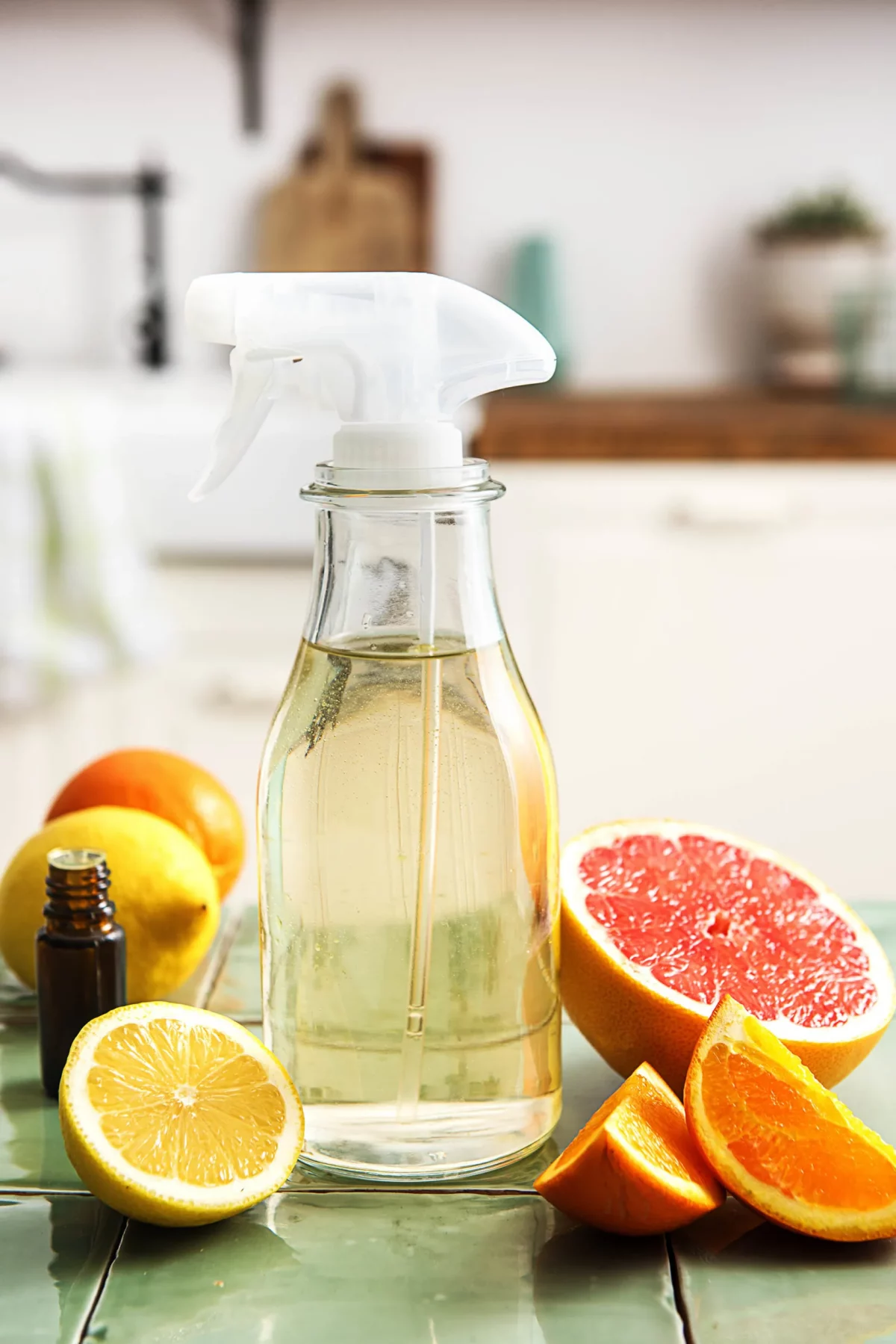
2. Heavy-Duty Degreaser Paste
For that caked-on, baked-on grease on a stovetop or in an oven. This one requires gloves and a little patience.
- Result: Melts away stubborn, polymerized grease that other cleaners won’t touch.
- Best For: Enamel or glass stovetops, oven interiors, greasy metal backsplashes.
- Do Not Use On: Aluminum or any painted surfaces.
- Ingredients: 1/2 cup washing soda, 1/4 cup liquid Castile soap (or Sal Suds), and just enough hot water to make a thick paste.
- Method: Put on your gloves. Slowly mix the hot water into the washing soda and soap until you get a frosting-like consistency. Slather it on the grease and let it sit for at least 30 minutes (or a few hours for a real disaster). Scrub with a non-scratch sponge and wipe clean with a wet cloth.
- Good to know: This is a ‘make-as-you-need-it’ recipe. It will harden into a rock if you try to store it, so only mix what you plan to use right away.
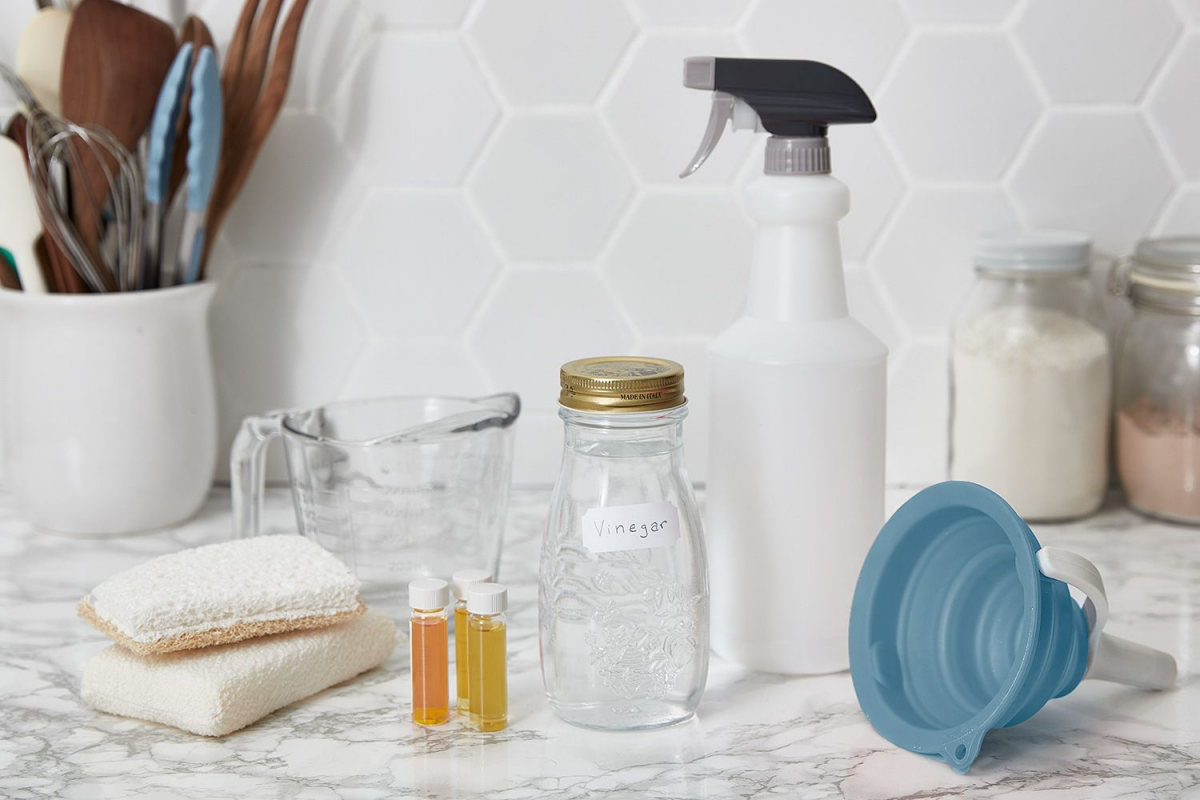
3. Truly Streak-Free Glass Cleaner
Store-bought glass cleaners are mostly just water and alcohol or ammonia. We can do better.
- Result: A perfect, streak-free shine on mirrors and windows.
- Best For: Windows, mirrors, chrome fixtures.
- Ingredients: 1/4 cup rubbing alcohol (70%), 1/4 cup white vinegar, 1 tablespoon cornstarch (this is the secret!), 2 cups warm water.
- Method: Combine everything in a labeled spray bottle and shake well before each use to mix up the cornstarch. Spray lightly and wipe with a clean, flat-weave (not fluffy) microfiber cloth.
- Pro Tip: Clean windows on a cloudy day. Direct sun makes the cleaner evaporate too fast, which is what causes streaks in the first place.
- Shelf Life: This will last for several months. Just give it a good shake each time.
- Super Important: Do not use this on your electronics! For your phone, laptop, or TV screen, stick to a dry microfiber cloth or a cleaner specifically made for screens. The alcohol and vinegar here can damage the special anti-glare and oleophobic coatings.

4. The Bathroom Two-Step: Scum and Grout
This is a one-two punch for the two biggest bathroom headaches.
Part 1: For Soap Scum on Tile & Glass Doors
- Result: Dissolves that cloudy, hazy soap scum film, making tile and glass doors sparkle again.
- Ingredients: Warm white vinegar and a few drops of dish soap.
- Method: Gently warm up some vinegar on the stove (don’t boil it!) and add a couple of drops of dish soap. Put it in a spray bottle, spray the shower walls and doors, and let it sit for 15-30 minutes. The heat gives the vinegar a real boost. Scrub with a non-scratch brush and rinse well.
Part 2: For Whitening Grout
- Result: Lifts deep-set stains and mildew, bringing dingy grout back to a brighter, cleaner color.
- Ingredients: 3% hydrogen peroxide and baking soda.
- Method: Make a thick paste of baking soda and water. Smear it onto the grout lines. Now, spray the paste with the hydrogen peroxide from its bottle. It’ll start to bubble and fizz. Let that reaction happen for about 15 minutes, then scrub with a stiff grout brush and rinse well.
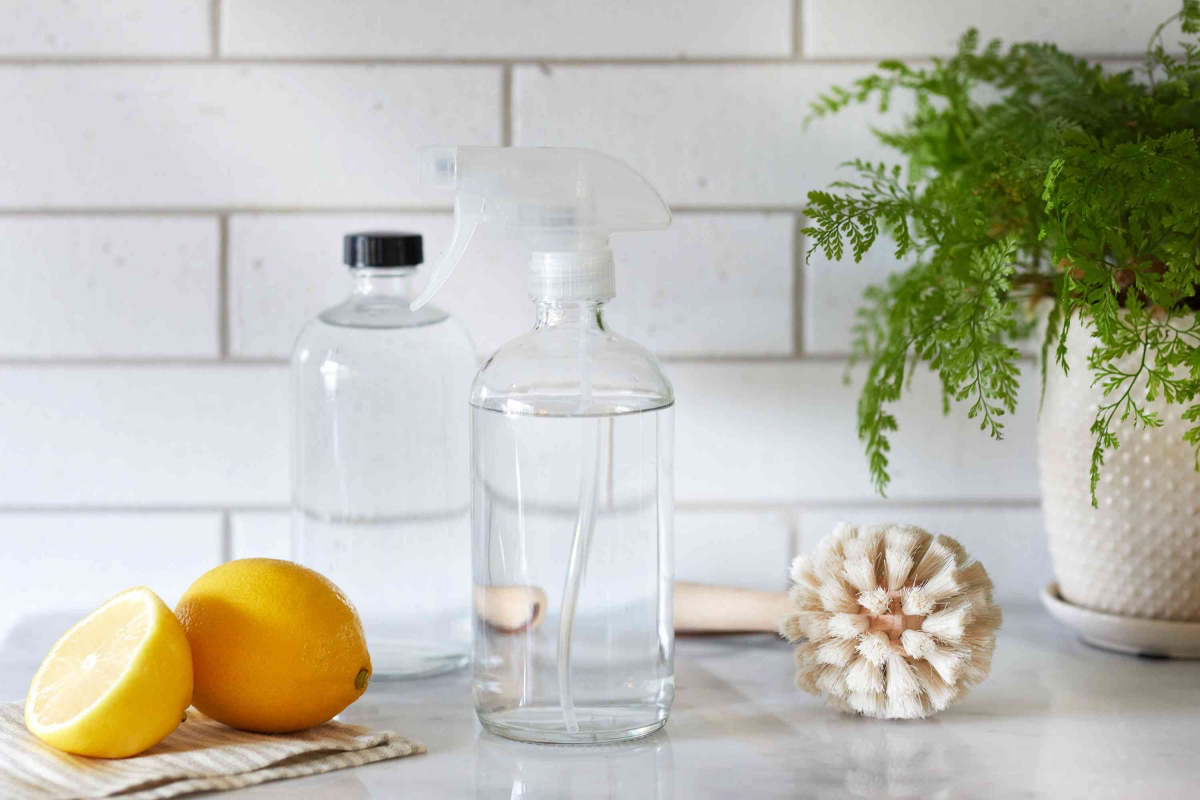
Knowing Your Limits (And When to Call a Pro)
DIY cleaners are amazing, but they can’t fix everything. A real pro knows when to stop and call for backup. It’s about honesty and getting the job done right.
If you see a few spots of surface mildew, the peroxide trick usually works great. But if you’re looking at a large patch of mold (more than a few square feet) or you smell that musty, earthy odor that won’t go away, you could have a much bigger problem lurking behind a wall. That’s not a DIY job. Mold can be a serious health hazard, so that’s when you call a certified mold remediation specialist.
Same goes for certain stains. While a paste of lemon juice and salt can sometimes help with a light rust stain on a porcelain sink, heavy rust often requires a commercial product with stronger acids. And sometimes, a manufacturer just plain requires a specific cleaner to maintain a warranty on a floor or appliance. In those cases, follow their rules.
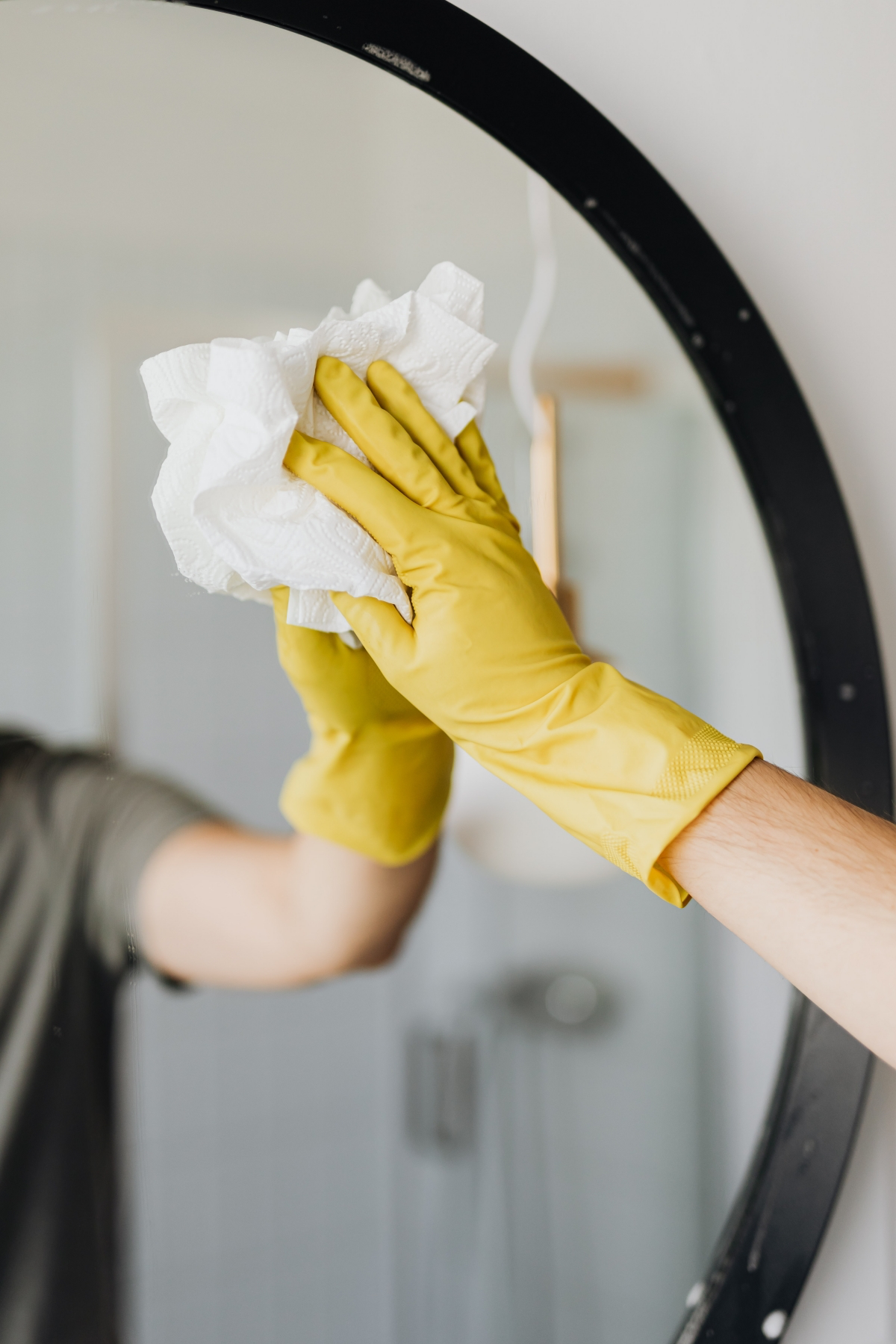
The Unbreakable Rules: Safety and Storage
Using these ingredients is pretty straightforward, but you have to respect them. I’ve seen some costly and dangerous mistakes from people who meant well. Please, take this part seriously.
- NEVER mix chlorine bleach with anything except water. I’m not kidding. Bleach + Ammonia = Toxic Gas. Bleach + Vinegar = Toxic Gas. Both can cause severe lung damage. Just don’t do it. Ever.
- Label. Everything. I know I’ve said it before, but I’ll say it again. A bottle of your all-purpose cleaner looks just like water. A bottle with diluted washing soda is a chemical hazard. Clear, waterproof labels prevent accidents.
- Store Safely. Keep all your cleaning supplies, natural or not, where kids and pets can’t get to them. Keep powders sealed and dry, and keep peroxide in its original dark bottle.
- Open a Window. Even with natural stuff, the fumes can be irritating. Ventilate your space, especially when you’re using a lot of vinegar in a small bathroom.
And that’s it. You’re not just following recipes anymore; you’re building a skill. You now have a small, powerful, and affordable cleaning kit that you understand inside and out. You know why it works, what it’s for, and what its limits are. That, right there, is the foundation of cleaning like a professional: being thoughtful, effective, and always, always safe.










